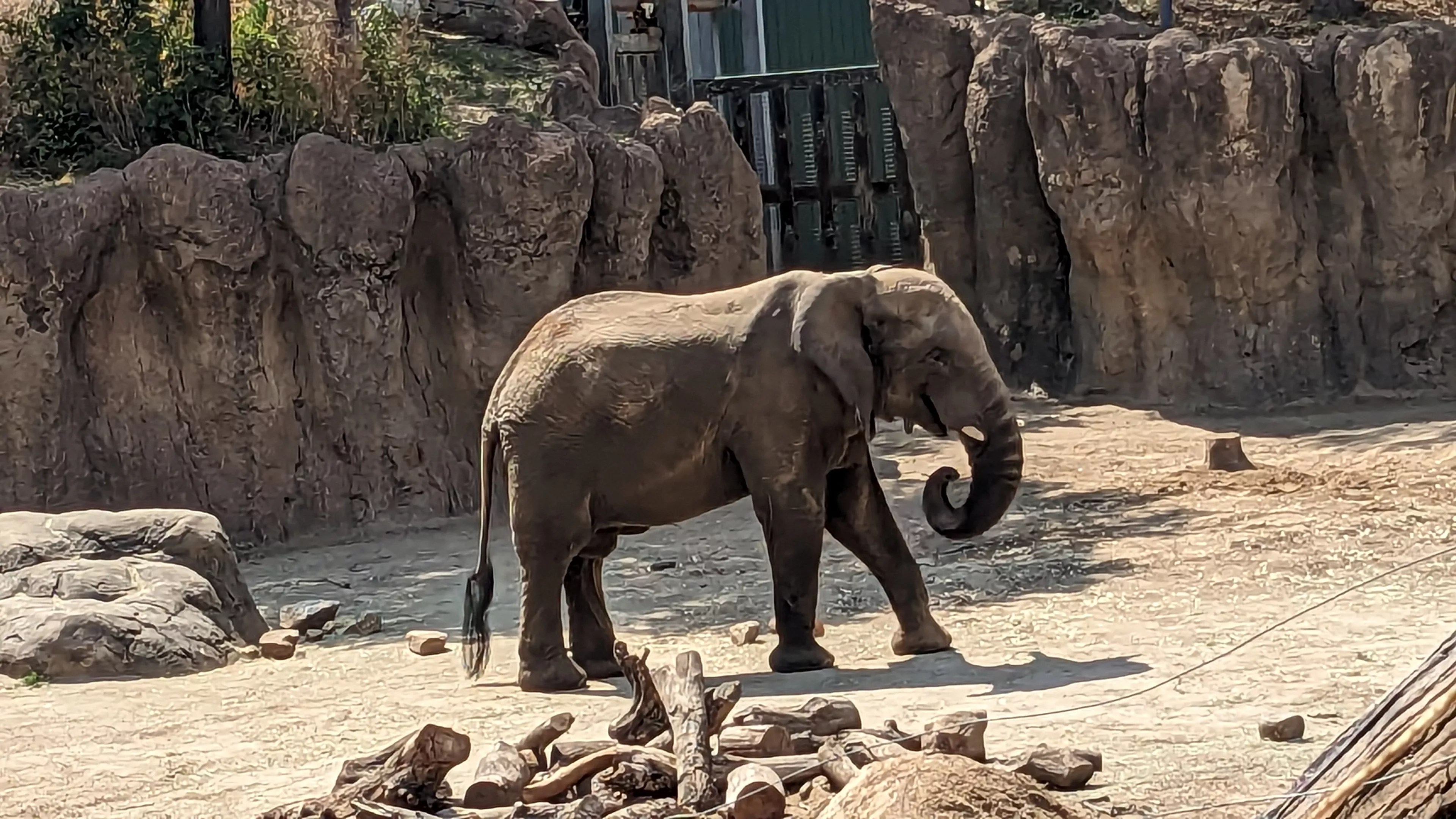
The Elephant Initiative

Audio By Carbonatix
In many ways, Dallas Zoo had a tough 2023. Last January, it was hounded by a series of bizarre break-ins. Several months later, Dallas Zoo CEO and President Gregg Hudson died.
Well, 2024 is also off to a rough start for Dallas Zoo.
On Jan. 1, CultureMap Dallas reported that a 15-year-old Dallas Zoo giraffe died following a nasty fall. And this week, the advocacy group In Defense of Animals (IDA) announced that the institution ranked No. 6 on its “10 Worst Zoos for Elephants 2023” list.
This marks the fourth time that Dallas Zoo has appeared on the annual ranking.
Will you step up to support Dallas Observer this year?
At the Dallas Observer, we’re small and scrappy — and we make the most of every dollar from our supporters. Right now, we’re $15,600 away from reaching our December 31 goal of $30,000. If you’ve ever learned something new, stayed informed, or felt more connected because of the Dallas Observer, now’s the time to give back.
According to an IDA news release, eight African elephants at Dallas Zoo are crammed in a space that a former elephant keeper described as the “equivalent to a bathroom for a human family of four.” The group also points out that Ajabu, a male elephant, died there last year ahead of his seventh birthday. He’d contracted the disease elephant endotheliotropic herpesvirus (EEHV) for the second time.
But Dallas Zoo defended its care of Ajabu, pointing out in a lengthy emailed statement to the Observer in response to IDA’s allegations that the virus threatens elephants regardless of whether they live in the zoo or the wild. The statement said the zoo is one of three to house an African elephant-dedicated EEHV lab.
IDA also blasted Dallas Zoo for having received wild elephants from Swaziland in 2016, a move they said “horrif[ied] international conservation authorities.”
However, Dallas Zoo argued that the community was “overwhelmingly supportive” of the choice to save the elephants from a historic drought in that country, where they risked being culled by wildlife officials.
IDA elephant consultant Courtney Scott told the Observer that the zoo treats bull elephants as “commodities” meant to “pump out babies.” She said they’re sometimes subjected to an invasive procedure to do so, which is hard on them.
Stripping elephants from their native habitat – going from a thousand-plus-acre savanna to a “tiny little zoo” – is a difficult adjustment, Scott said. Elephants don’t do well in captivity because they need space to thrive: “It literally is the elephant in the room.”
“The sad thing about breeding [elephants] is they’re just going to grow up and live in that environment for the rest of their life.” – Courtney Scott, IDA
Male elephants in particular need to expend their energy, she continued. During their sexual reproduction cycle, they relieve pent-up aggression by tearing through the savanna or jungle. But when they’re confined in a zoo, they have “nowhere to go.
“They’re frustrated,” she continued. “They’re highly aggressive and dangerous to the keeper and to the other elephants. So, that’s why a lot of times they’re [kept] alone.”
The zoo noted that IDA is an organization that clearly opposes “elephants living in human care,” adding that the group previously praised Dallas Zoo when it opened the Giants of the Savanna mixed-species habitat (as the Observer reported in 2011). Field research served as the basis for the construction of that 11-acre habitat, and it was designed to encourage elephant activity and exercise, the zoo said.
Dallas Zoo further highlighted its conservation, research, anti-poaching and habitat restoration efforts, among other initiatives to safeguard wild populations. It “directly supports partner programs like this in Botswana and South Africa, and it is the only organization doing work with forest elephant conservation in Sierra Leone,” the zoo’s statement read.
“Zoos are often the only way some guests will connect with wildlife and nature firsthand,” the statement later continued. “The reality is, the vast majority of people will only ever experience an elephant at a zoo, where they also can learn how to take action to help the species in other parts of the world.”
But Scott argues that zoos aren’t ideal environments for the elephants themselves. In the wild, these animals have lots to do and can forge lifelong friendships in herds, so it’s hard for them to be isolated in zoos. The way she sees it, it’s a sad life for a captive elephant – especially for the males.
Elephants need vast spaces to be physically and mentally healthy, and prolonged lack of stimulation can lead to their becoming brain damaged, she said.
Scott’s organization is calling for the zoo to end its breeding program, send the remaining elephants to a sanctuary and close its elephant exhibit. Thirty-four other zoos have shuttered their own exhibits, she said.
“The sad thing about breeding them is they’re just going to grow up and live in that environment for the rest of their life,” Scott continued. “I like people to think about what they would feel like if they were trapped in a small yard for their entire life, much less a 4- to 7-ton elephant.”